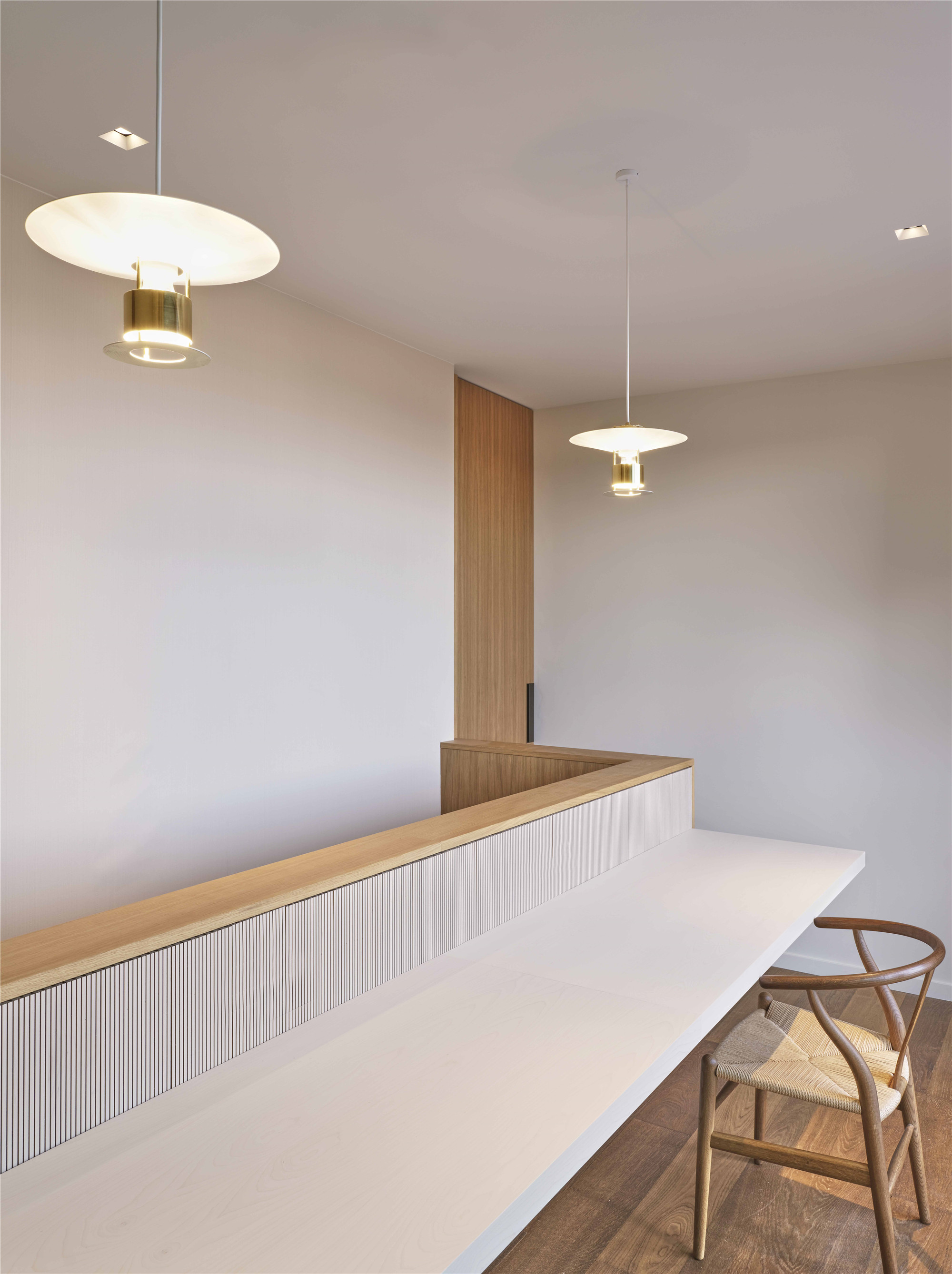
设计单位 PROTOTYPE
项目地址 荷兰阿姆斯特丹
建成时间 2020年
建筑面积 2500平方米
阿姆斯特丹的Amstelkwartier新区已经成为一个充满活力的城市社区。这一地块发展于经济危机的中期阶段,商业房的项目被中止,使市政当局有机会采取私营的举措。
The new area Amstelkwartier in Amsterdam has become a vibrant city neighborhood. The foundation of this area’s development lies in the middle of the financial crisis. Commercial real estate projects were put to an end, making municipality giving the possibility to private initiatives.
几个位于Welnastraat的自主地块被释放出来,有三个人利用这个时机为创建了住所,并由此成立一个房地产集体。三个自主地块被合并成一个集体建筑项目。
Several do-it-yourself lots were released in the Welnastraat and three private individuals took their chance to not only realize a home for themselves, but also for their future neighbors and decided to constitute a real estate collective. Three do-it-yourself lots were merged to one collective building project.

应对街道自主计划形成的多样设计,设计师提供一个清晰的设计结构。这个结构拥有独特的规模与材料,是阁楼公寓设计的翻版。
Studio PROTOTYPE saw an opportunity to design a clear structure opposed to the diversity of design following the do-it-yourself initiatives in the street. This structure is distinctive in scale and materiality and a translation of the typological design of loft apartment.

住宅向阳而建,通过空隙形成宽松的连接。一个中央的建筑核心使开放的生活环境成为可能,在其中可以进行多种空间布置。核心的规模被控制到最小,楼梯完全外置,使其成为后院阳台的一部分。这种设计让楼梯完全体现在外立面上,在整个建筑内形成了更为开放的生活空间。
The residential houses are at the sun side of the building spaciously connected by means of a void. A central core enables an open living environment, in which multiple set-up principles are possible. The core has been remained as small as possible by placing the stairwells completely outside of the building, making them part of the balconies on the backyard side. This finding, of placing the stairswells on the outside of the façade, resulted in more open living space within the complete building contour.

通过打破基座与顶部的结构,建筑得以朝向街道与景观敞开。混凝土立面的韵律将公寓凸显出来,窗户有着极高的设计,其使用的玻璃有5.4米长。这些窗户也提供了望向新社区的视野。
By breaking up the structure at the plinth and the crown, the building opens up to the street and the view. The rhythm of the concrete façade emphasizes the loft apartments for which grand and high windows have been created, based on the maximum glass size of 5.40 meters. The windows give a framed view on the new developed neighborhood.

混凝土立面结构进行了多种表面处理,例如正立面penants处的粗糙结构表面。Penants被浇筑在传统的木制模具中。而混凝土框架在更为细节的处理上,则采取了一种更光滑的结构,以使混凝土材料在光滑与粗糙之间创造一个更微妙的纹理差异。
The concrete façade structure has been given multiple surface treatments, such as a surface with a coarse structure for the front façade penants. The penants are poured in traditional wooden molds. The deeper detailed concrete frames are treated to have a more smooth structure in order to create a more subtle difference in texture between coarse and smooth within the concrete materialisation.



与建筑物粗野的混凝土外观相反,公寓内部的设计微妙且温暖。建筑物的核心覆有特殊的木纹图案,形成了贯穿整个公寓细且连续的线条。
In contrary to the brutal concrete exterior of the building, the interior feels subtle and warm. The core of the building is coated with a special wooden pattern that forms a fine continuous line through the complete house.




设计图纸 ▽



完整项目信息
Period: 2018-2020
Size: 2500m2
Design studio: PROTOTYPE
Design team: Jeroen Spee, Jeroen Steenvoorden
Project team: Alicja Będkowska, Adam Çardak, Rodolfo Siccardi,
Jochem Alferink
Contractor: WAM Groep
Fixed interior: Smeulders Interieurgroep
Status: completed
Photography: Jeroen Musch
版权声明:本文由PROTOTYPE授权发布,欢迎转发,禁止以有方编辑版本转载。
投稿邮箱:media@archiposition.com
上一篇:屋顶上的白房子:三分一宅 / 梓集
下一篇:2020柏林建筑奖9个获奖作品,带你了解德国近年好建筑